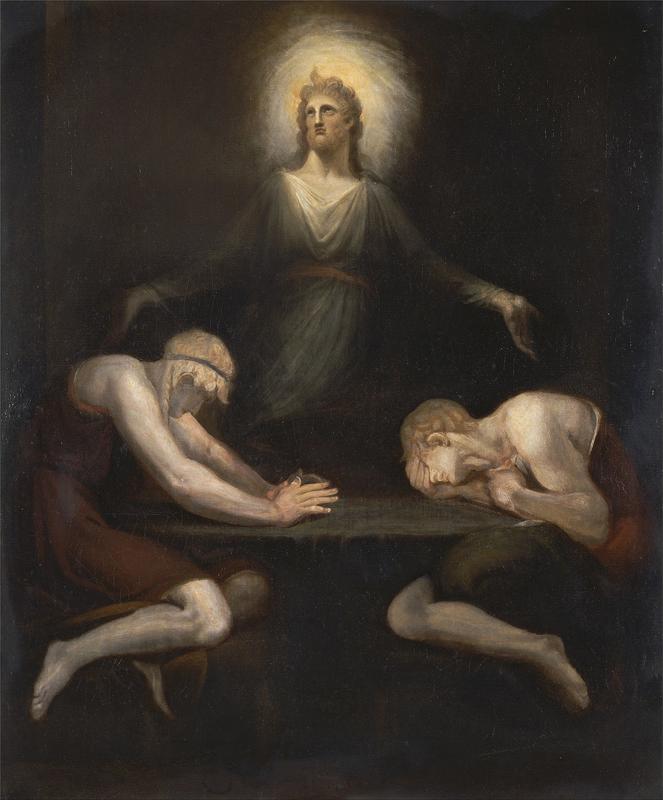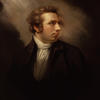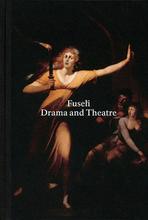More about Christ Disappearing at Emmaus
- All
- Info
- Shop

Sr. Contributor
Henry Fuseli was not known for his predictability.
For someone who had renounced Christianity over twenty years prior to creating this painting, Fuseli was not the first artist one would expect to tackle such a well-known story from the Bible. But perhaps the scene’s ubiquity was what drew in Fuseli. Many of the greats had already mastered the illustration of the passage describing the supper at Emmaus. Caravaggio painted two versions of this scene at the apex of his career, and Diego Velázquez's Supper seems to be his attempt to paint in a Caravaggesque style. It has also been painted by Albrecht Dürer, Jacob Jordaens, Tintoretto, Titian, and Paolo Veronese. With that lineage, it would only seem natural for other artists to also attempt to represent the story.
It would make perfect sense, except for the fact that Fuseli rarely painted religious subjects. He normally painted supernatural images, so his choice of Biblical story is interesting. The story takes place on the third day after the crucifixion, as two of Christ’s followers were traveling the seven miles between Jerusalem and Emmaus. As they walked, they met a third traveler, whom they told about Jesus’ resurrection. They came upon an inn and decided to rest up and get some food. As the third traveler broke the bread for the three men to eat, the two travelers realized that their new travel companion was Jesus himself. In the moment of this recognition, Jesus disappeared, leaving the travelers understandably flabbergasted.
Although the story originates from the Bible, it does have a fantastical feeling to it. I mean, if Jesus didn’t embody some supernatural qualities, people wouldn’t have been so inspired by what he could do. Fuseli cleverly diverges from the details of the story to play with the scene and what it represents. Although Christ is supposed to be disappearing, Fuseli instead painted a highly visible, glowing figure. Christ steals the show from the two other figures in the painting, as sculptural as they may be. Fuseli even alters the title to shift the attention from the supper to the story’s more supernatural element – the vanishing.
It’s not like Fuseli didn’t understand what the story was about, either. Earlier in his life, Fuseli had been ordained as a priest, so the self-taught artist knew Christianity and the Bible intimately. Perhaps it was this closeness to the religion that allowed Fuseli to interpret the well-known tale in such a unique and thought-provoking way. Fuseli was never one to play by the rules. He rejected the stiff and boring elements of Neoclassical art in favor of bold expression and exaggeration. Basically, he was a drama queen, and people – especially the British – loved him for it.
Sources
- Goethe-Museum. “Room 3.” Goethe-Haus Museum. 2002-2005. https://web.archive.org/web/20070715151157/http://www.goethehaus-frankf…. Accessed 18 November 2021.
- Salomon, Xavier F. “The Supper at Emmaus.” Collection. The Metropolitan Museum of Art. 2011. https://www.metmuseum.org/art/collection/search/437871. Accessed 18 November 2021.
- Teresi, Rebecca Quinn. “Seeing and Not Seeing.” The Visual Commentary on Scripture. King’s College London. https://thevcs.org/road-emmaus/seeing-and-not-seeing?first. Accessed 18 November 2021.
- The Art Story. “Henry Fuseli.” Artists. https://www.theartstory.org/artist/fuseli-henry/. Accessed 18 November 2021.
- The National Gallery. “The Supper at Emmaus.” Paintings. https://www.nationalgallery.org.uk/paintings/michelangelo-merisi-da-car…. Accessed 18 November 2021.
- Waterman, Joshua P. “The Night-Hag Visiting Lap-Land Witches.” Collection. The Metropolitan Museum of Art. 2013. https://www.metmuseum.org/art/collection/search/436423. Accessed 18 November 2021.
- Yale Center for British Art. “Christ Disappearing at Emmaus.” Collection. https://collections.britishart.yale.edu/catalog/tms:785. Accessed 18 November 2021.












